Hello everyone, I recently held a distinctive course for Innolux Corporation. As a company focusing on the manufacture of TV panels, Innolux stands out in the market with its unique corporate culture. They have found a balance between the gentle demeanor of Chimei Electronics and the ambition of Foxconn, which is a manifestation of their unique charm. From being a company that was not a market leader, after being acquired by the Foxconn Group, Innolux has gradually grown into the largest panel manufacturing company in Taiwan.
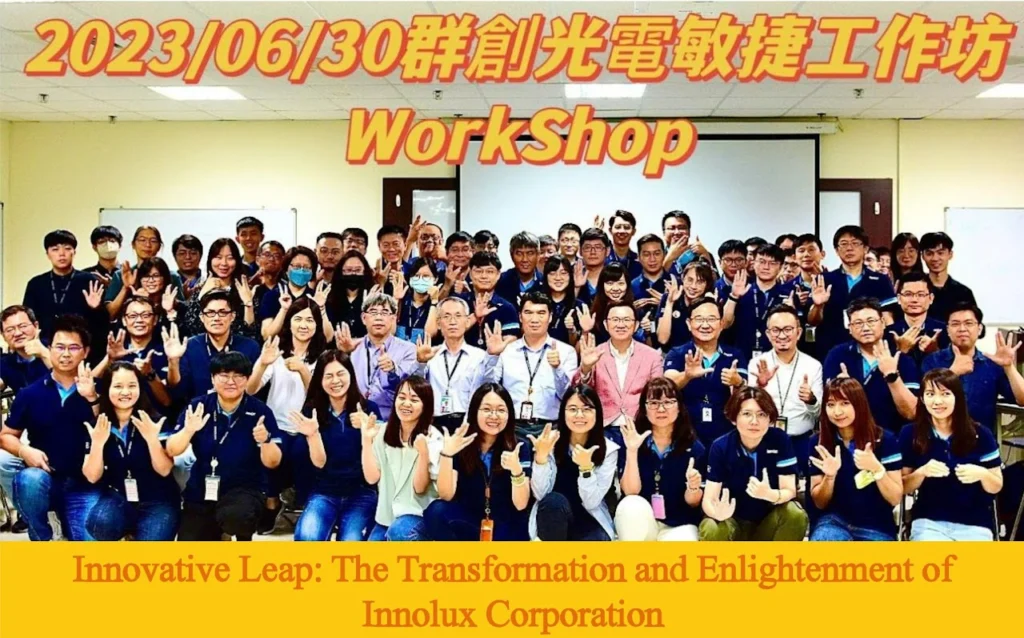
I was invited to Innolux Corporation to share my knowledge and experience as a product owner, all thanks to Mr. Zhang Youming, the head of Innolux’s Intelligence Advancement Department. He is a member of our GPT Application Community, we have had many exchanges, and I deeply felt his enthusiasm and willingness to help. Therefore, when he invited me to lecture for his team, I gladly accepted.
Director Zhang extended a helping hand at a critical moment when I was in urgent need of AI customer service, allowing us to successfully complete the project. He invited me to share with their large team of about 80 employees. Initially, he expected me to do a one-and-a-half-hour lecture, but I suggested to him that the effect of an Agile practical workshop for 50 people would be better than a lecture for 100 people. So, we decided to hold a hands-on workshop for product owners. This course far exceeded my previous experiences, with as many as 80 participants.
During a learning afternoon that I spent with Innolux, I was surprised to find that eight senior executives participated in our workshop, which was not just their participation, but an investment and effort in transformation. Here, we can see a clear learning point, which is the importance of leader participation in corporate culture transformation. What impressed me was not just their participation. Everyone brought their laptops, unique insights, and infinite creativity. This phenomenon showed us that when the senior executives of the company are willing to learn with the engineers, the practice of Scrum is no longer just an engineer’s affair, but becomes the starting point of company culture transformation.
In the beginning, these students were confused about their role as product owners. However, by exploring the product vision from the perspective of a product owner, they gradually discovered the improvement in engineers’ abilities to tell stories and dream. We discussed the key factors for successful product strategy and encouraged them to analyze stakeholders with team power. They were surprised to find that there were so many stakeholders to consider in the product development process, and their horizons were expanded.
Finally, in a short half-hour, they selected a business product and presented it in the form of a product roadmap. They stated that this method allowed them to experience unprecedented collaborative effects, and it also highlighted the importance of knowledge and methods.

Looking back at the entire course, I’m gratified by the insights and gains the participants have achieved. They have not only recognized the importance of product vision but also gained a deep understanding and practice of agile management tools and techniques. This course has not only enriched their product management knowledge but also enhanced their implementation capabilities and agile thinking.
Even though our workshop was only 4.5 hours, the Intelligence Advancement Department of Group Innovation believes that this will be an important step in their journey of product management. The participants’ gains and insights focus on the following key areas: Firstly, they generally recognized the importance of product vision, believing that a vivid and attractive vision is a key factor for product success. Secondly, they have gained a deep understanding and practice in using agile management tools and techniques. They learned how to apply agile methods in every step of product development, from product design to the creation of product roadmaps, demonstrating the effective application of agile philosophy in the product development process.
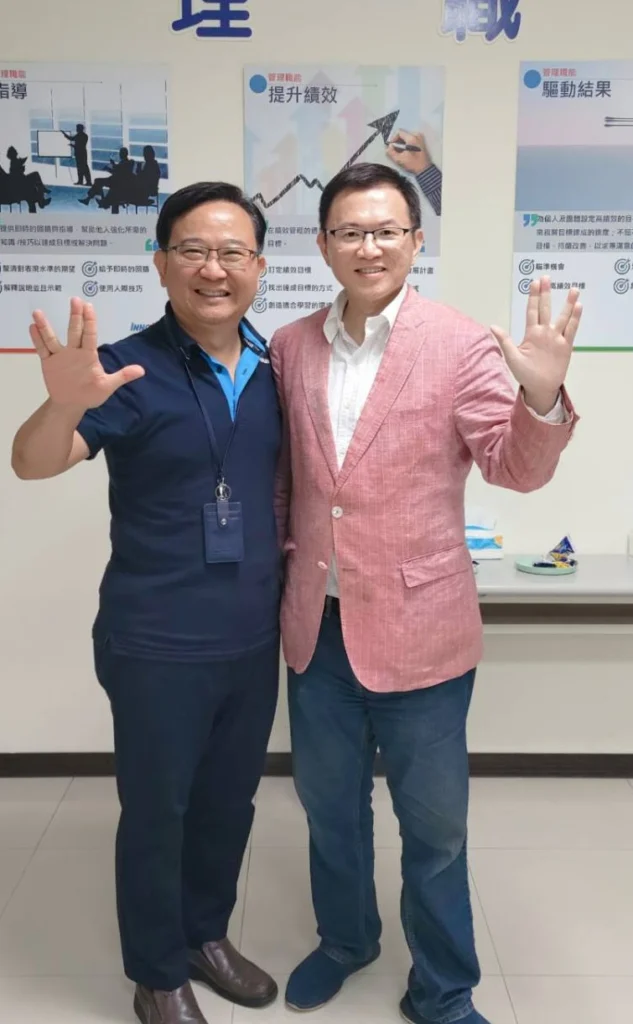
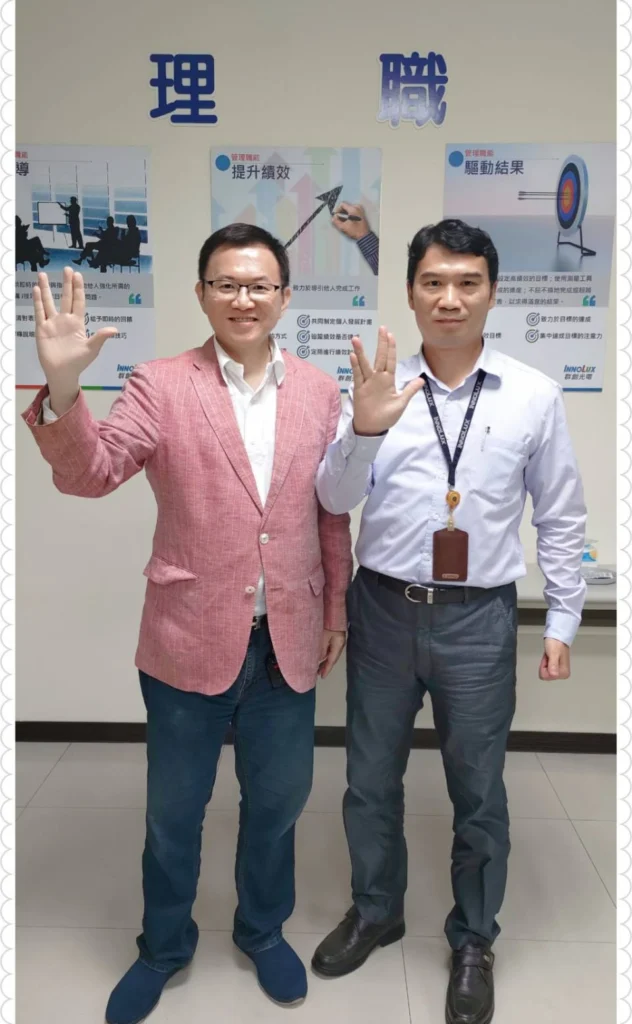
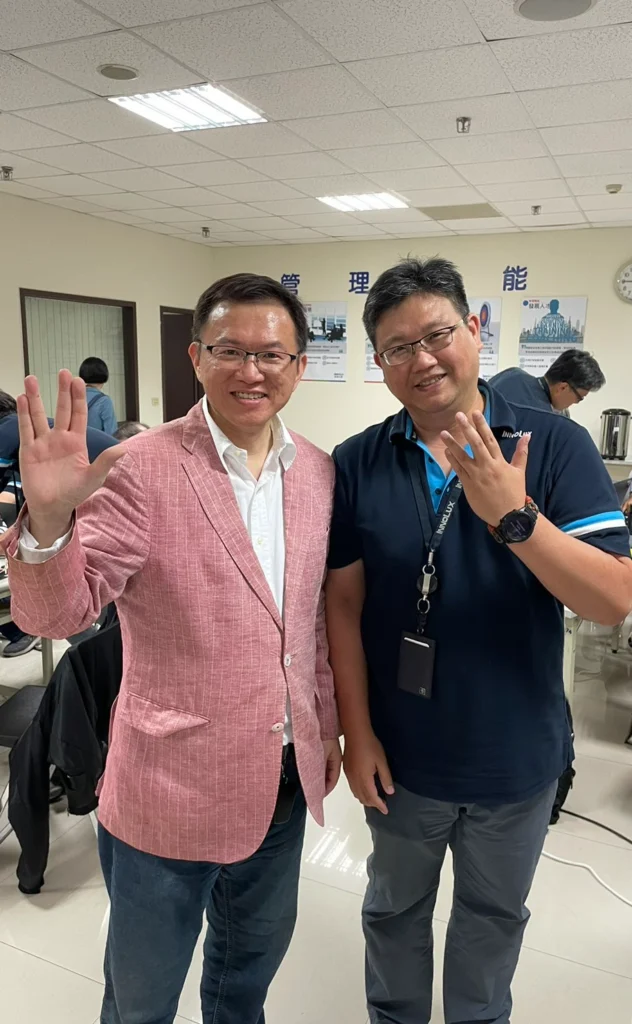
In the actual product development process, participants experienced the importance of stakeholder analysis. They recognized that when creating or updating a new generation of products, they must consider the diversity of stakeholders and the complexity of product function orientation. They understood that stakeholders can have both positive and negative impacts, which need to be comprehensively considered. In addition, they also felt the critical role of product mapping and agile development in product strategy. Starting from defining the minimum viable product (MVP) goals for each stage, through diverging and converging processes, as well as numerous effective tests and feedback, they truly grasped the connection between customers and the product.
In the face of the rapid iteration of AI technology, the Intelligent Advancement Department of Group Optoelectronics embraces innovative vitality. They may have only read the Scrum Red Book or the Scrum Blue Book before and have not truly implemented it, but this workshop allowed them to truly experience the power of Scrum and gained new insights into finding the best solution strategies.
This workshop may be just the beginning of their future path, but we believe that they will bring more innovation and breakthroughs to respond to the new market environment. We all look forward to seeing their next steps.
If you are also interested in the implementation of Scrum, or want to introduce such a change to your company, you are welcome to organize such a workshop. Let’s open the door to innovation together and face the future!
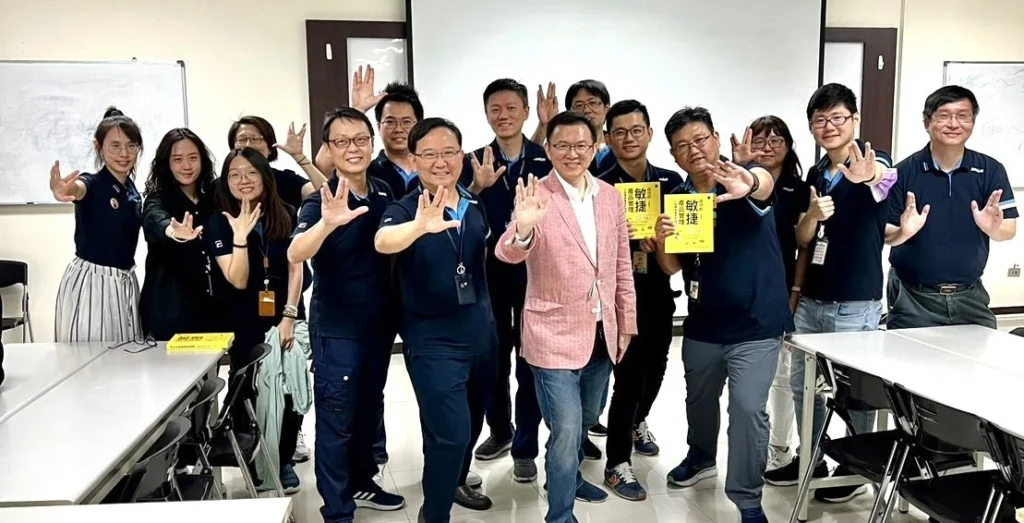
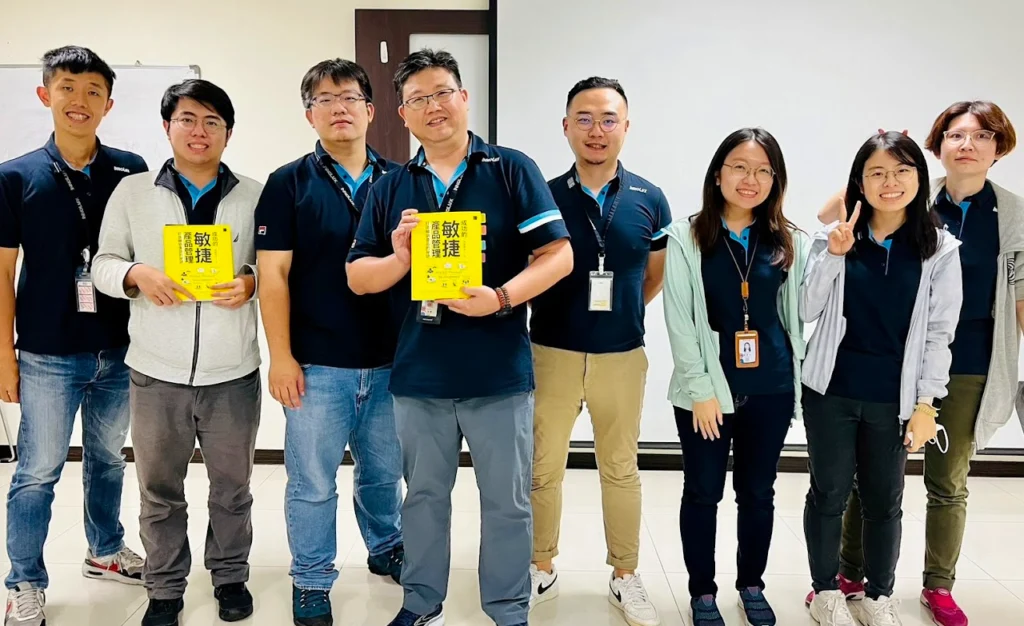
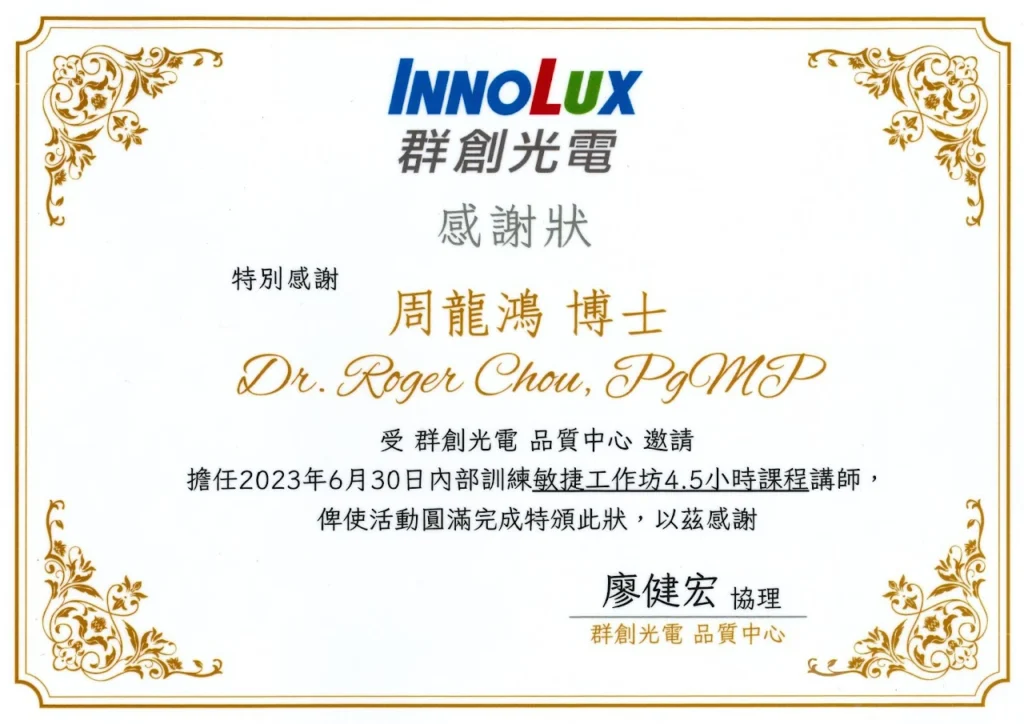
Participant’s sharing of learning experience.
idd Liu Oming: Learning agile development, I deeply understand its importance: quick communication, incremental development, balancing marketing and product, the dual role of the Product Owner (PO) is key. The product vision and storytelling inspire the team, developing collective strength towards the vision. Recognizing key stakeholders and product strategy decides success, the roadmap should return to the essence.
idd text PD Li Oru: Discussing product vision, how to let the group in a short time from divergent ideas, converge according to ‘For, Who, The, Is a, That Unlike, We’ etc. into phased, feasible schemes, and according to short, medium, and long-term planning to achieve goals.
IDD Zhang Oming: Experienced the great power that the PO’s strong vision in agile development may bring, and the results of focusing on doing the most important things. Finally, using the right tools to assemble the power of everyone’s knowledge can effectively produce rich ideas in an agile way!
PO Huang Ohua: Learned how to identify relevant stakeholders, and learned a lot of useful tools in class.
PO_Li Oyu_Mark: 1) Logical stakeholder identification & product map setting.
PO Su Oming: 1. The importance of vision. 2. Understand that before product development, you need to brainstorm with relevant stakeholders, still finding out 80% of the demands before product development, which are needed by the stakeholders. Product Quality.
PO Lu Oyou: More familiar with the role positioning of the PO and the benefits brought by agility is beyond imagination. At the same time, promoting agility requires more team support, allowing the product to achieve the goal and expected vision faster.
Thank you very much for today’s class, gained a lot!
PO Ouyang Oshi: Find product positioning and characteristics from the vision, use agility to create and repeatedly diverge and then converge the product roadmap, apply team strength to produce creative products.
Product Compliance and Certification Guo Ofu: Learning how to use agile management tools and techniques to lead colleagues in the development of a carbon management system.
SO PO Du Oxian: The power of the team is far greater than individuals fighting alone, unite the team with Scrum.
SO_Ofang: The acceptance of stakeholders determines the success or failure of the product. If it can only satisfy a few stakeholders, it cannot achieve great success in projects or products.
SO Zhu Owen: In the early stage of the project, the team needs to deeply understand the user group that will ultimately use the project’s output. The most effective way is to use Persona.
SO Zhang Ocheng: Product goals should be made based on the effect of the output, and think about why we need to open the product.
SO Xu Owen: Product vision highlights: PO vision brainstorming-> find vision keywords-> convey vision-> touch hearts-> attract die-hard fans-> withstand the test.
PD Huang Oxiang: Hands-on thinking of stakeholders helps to reflect on the focus of the project requirements.
PD Qiu Ocheng: When developing a product, the importance of granting authority to the PO.
PD Lin Ozhong: When creating or updating a new generation of products, many unexpected stakeholders will lead to different directions of product feature development, the development schedule of product features, under the least viable network development, with different perspectives of many people thinking, can create more different ideas, can more comprehensively care about the development of the product.
PD Cao Ozhi: Apply the teacher’s tools more widely to let the team think about the different aspects of the product together, connecting the product with the vision.
PD Tu Ohui: Distinguishing product goals from different perspectives.
PD Li Rong: Learning focus: Product vision and goal planning. Learning about early-stage planning of product development, the influence of customer needs and stakeholders during the process, and the collective effort of brainstorming to add more requirements to a product, making it more complete and improved.
PD Ye Hua: 1. Product roadmap planning. 2. Learning the concept and execution of scrum, which has been very beneficial. Thank you, teacher.
PD Jacob Liang: Breaking through thinking blind spots, beyond the 80/20 rule and existing frameworks, recognizing both positive and negative aspects, as positives can turn into negatives and vice versa. Therefore, all factors need to be considered. The teacher provided us with a comprehensive perspective to focus on the product and dynamic influencing factors, avoiding neglect that could lead to irreversible consequences in the future.
PD Lu Jun: Learning focus: Mastering the use of Miro boards, enabling teams to have a common language when using them independently. Personal gains: Brainstorming can generate results from multiple perspectives, allowing for more possibilities for the product and significantly reducing the timeline.
PD Wang Nan: A product owner needs to have concepts and ideals to persuade others and ultimately have a chance at success.
PD Dong Ting: Understanding how to define product stakeholders. After this course, I have a clearer understanding of how to plan a product and execute it.
PD Lu You: The importance of vision to gather team cohesion and create resonance with consumers.
PD Tim: Deeply understanding the importance of stakeholders and the practical application of agility in product development.
PD Zhang Hua: Maximizing the benefits of brainstorming.
PD Lin Teng: One of the key points of agility is prioritizing development tasks within a limited time frame instead of extending the development indefinitely to complete everything at once.
PD Yang Ting: How to gradually develop agile thinking: vision, phased goals, MVP, continuous optimization. The results of collective brainstorming are impressive! The importance of a visionary perspective.
PD Yang Zhu: Stakeholders include not only positive but also negative relationships to consider.
PD Liao Xiang: Completing and testing the MVP, capturing the customer-product connection through multiple effective tests and feedback to achieve agile development.
PD Ke Cheng: Learning focus: Generating and creating product roadmaps. Personal gains: Applying what I learned today to the Department 4.0 project, enabling the project to create value.
PD Li Yu: Learning to design product vision and goals, as well as utilizing elevator pitches to showcase the project’s unique features.
PD Gao Ping: Learning the process of ideating a product vision and systematically organizing its content as a basis for discussion.
PD Chen Zhang: Product vision – setting a personal vision as a PO and then spreading that vision to team members and the public to become a fervent advocate for your own product.
PD Lin Rong: Some planning can be quickly completed through collective brainstorming, effectively increasing the speed of team planning.
PD Chen Da: Understanding how to plan a product: 1. Elevator pitch. 2. Stakeholder map. 3. Product roadmap.
PD Lin Qi: Setting a vision for the product.
PD Chen Ying: Effectively using various mapping tools to quickly summarize and organize multiple opinions, making convergence much easier.
PD Xiao Fang: Stakeholders can have positive and negative aspects; it’s important to consider all perspectives.
PD Weng Rui: The most profound aspect is the product map. It starts with defining the MVP goals for each stage, which may initially be divergent, but through agile methods, ideas are generated, and eventually, the PO brings them together.
PD Li Yu: Learning focus: Product vision. Having a distinct and appealing vision motivates more followers to execute and achieve it. Personal gains: Today, the teacher taught us many agile product management methods that can be applied not only to IT products but also to any product development. By continuously adjusting, we can ultimately deliver a product that meets customer needs.
Quality Center Liao Hong: The importance of product vision is something we overlooked before, but it turns out to be a critical element. I have learned a lot!
Management Office Li Xuan: The PO is the key to product success. They need to communicate and lead the team in marketing, operations, and advertising. The key is to have a vision. To be agile, one must understand priorities, sequencing, and be willing to flexibly apply methods to fully embody the spirit of Scrum.
A: Understanding how to find project goals and divide development items.
GX: There were many things we hadn’t thought about before. Even if we asked about them, we were told they were someone else’s responsibility, and we should focus on our own tasks. Today, I learned that we should all have a good understanding of everything that contributes to development, even if it’s not directly related to our own work. Brainstorming goals helps focus our thinking, and brainstorming unrelated topics helps broaden our thinking.
Emily: The importance of product vision in agile development.
Trista Hung: 1. PO vision & product map. 2. Learned more comprehensive knowledge about product management and experienced the effects of agility.
Jemmy Lin: Utilizing the power of everyone to quickly create a product roadmap with a small time investment, presenting possible futures for the product to inspire everyone’s imagination. It also allows the PO more room for thought in planning the product’s vision and its potential impact on others.
Jurry Chen: Unity is strength. Through collective brainstorming combined with good methods and tools, we can quickly converge requirements and explore diverse ideas and creativity.
Matthew Huang: Elevator speeches can quickly summarize key points. Stakeholder maps help understand the relationships between allies and enemies. Brainstorming together is more efficient than working alone.
Ellery: The importance of vision: Sun Tzu’s Art of War mentions using five aspects to evaluate whether to engage in war: Dao (Way), Tian (Heaven), Di (Earth), Jiang (General), Fa (Method). “Dao” represents vision: “If the vision is one that all can live with, fight for, and die for, then one will not fear danger.” In other words, as long as there is a vision, someone will fight for it even at the risk of their life.
Victor: Brainstorming with multiple people to find new possible directions, avoiding the risk of relying solely on specific individuals and potentially taking the wrong and narrow path.
Kiki Chiu: The power of teamwork collaboration.
Aaron: Adopting Scrum development can significantly improve the efficiency of conceptualizing product requirements.